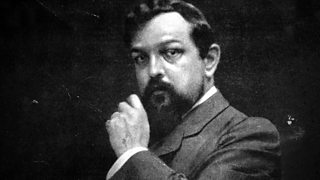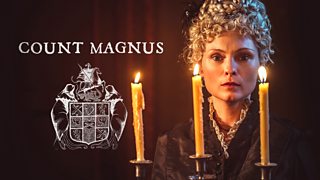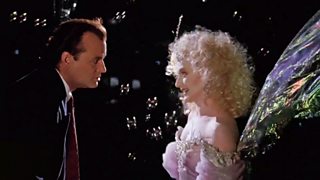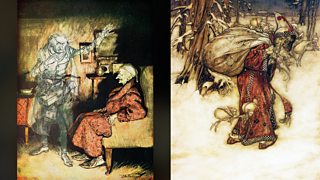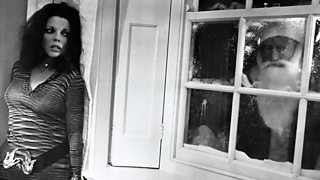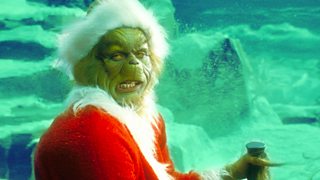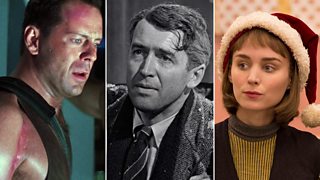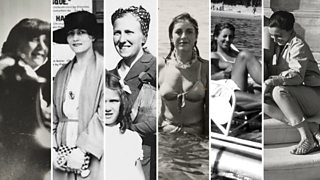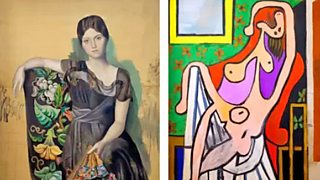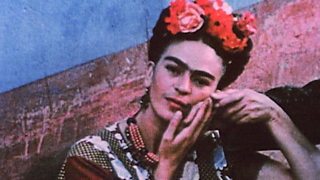Christmas gift books and the Golden Age of Illustration: The magical worlds of Arthur Rackham
13 December 2022
Arthur Rackham is one of the great figures of Britain's Golden Age of Illustration. His ethereal style featured in the most prestigious Christmas 'gift books' of the period: Rip van Winkle, A Christmas Carol, Peter Pan in Kensington Gardens, Alice in Wonderland, Grimms' Fairy Tales and The Night Before Christmas. Take a tour of Rackham's magical worlds, created when the spirit of the modern festive season was taking shape.
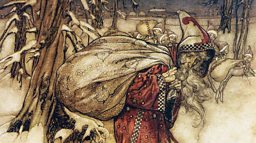
British artist Arthur Rackham (1867-1939) was the pre-eminent illustrator of the early 20th century. His imaginative colour interpretations of fairy tales and fantasy literature featured gossamer fairies, mischievous goblins and gnarled trees that enchanted and petrified readers in equal measure.
These desirable, illustrated books would be the top-selling festive items of the day.
Rackham's 1900 illustrations for Grimms' Fairy Tales caused the historian Kenneth Clark, presenter of seminal BBC series Civilisation, to write of his fear at even opening the pages of his copy - such were the "images of terror" within.
Rackham said he believed in “the greatest stimulating and educative power of imaginative, fantastic and playful pictures and writings for children in their most impressionable years”. He worked in a “striking vein of Nordic fantasy, creating a bizarre world populated by goblins, fairies, and weird creatures” - read more at Art UK.
During his years at he top, Rackham devoted months annually to the preparation of a selected Christmas gift book, and these desirable objects would be the top-selling festive items of the day.


Arthur Rackham and J.M. Barrie
Arthur Rackham's 51 colour illustrations for Rip Van Winkle, the first Christmas 'gift book' published in 1905, contributed greatly to the book's success. Rackham began the tradition, and money-spinner, of exhibiting prints from his books at the Leicester Galleries in London. The author J.M. Barrie was invited to the 1905 opening and was “enchanted”, commissioning Rackham to produce 50 colour plates over 18 months for his story featuring the character Peter Pan.
Peter Pan became Rackham's R&D lab for his printing technology revolution.
Rackham's work on Peter Pan in Kensington Gardens helped to make it the best-loved Christmas gift book of 1906, and copies of the deluxe edition now sell for many thousands of pounds.
Barrie wrote to Rackham, “I think I like best of all the Serpentine with the fairies, and Peter in his night-gown sitting in the tree... I am always your debtor, and I wish the happiest Christmas, and please, I hope you will shed glory on more of my things.”
Maria Popova, writing in The Marginalia, noted that “Rackham would revolutionize the technology and economics of book art with his Alice in Wonderland illustrations; Peter Pan became the R&D lab for his revolution, working within the limitations of the three-color printing process then available to create worlds of wonder with his meticulous ink lines, populating London’s familiar landscapes and places with otherworldly creatures of haunting tenderness and strangeness.”
A review in The Times of 14 December 1906 noted that Rackham's intricate Peter Pan illustrations would enchant young and old alike: “The appeal again seems to be addressed to the drawing room rather than the nursery. It is all very subtly contrived to catch the fancy of (self) indulgent elders at Christmas time...”
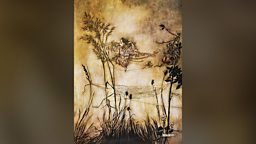
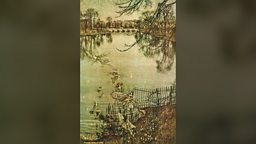

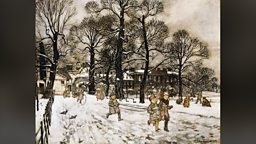
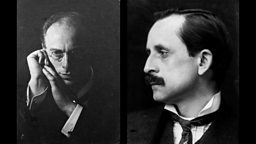
Claude-Emma Debussy, the daughter of French composer Claude Debussy and affectionately known as "Chouchou", had one of Rackham's Peter Pan illustrations hanging above her bed.
Chouchou was a huge inspiration to Debussy, and her enchantment at Rackham's image led her father to write a piece of music called Les Fées Sont D'exquises Danseuses - 'The fairies are exquisite dancers'. This talented musician in her own right died at the age of 14 from diphtheria, just a year after Claude Debussy's death in 1918.
-
![]()
Debussy - Preludes I and II - BBC Music Review
Includes No. 16, Les Fées Sont D'exquises Danseuses

Arthur Rackham and Christmas
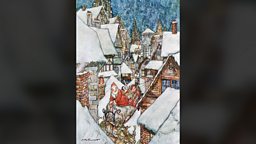

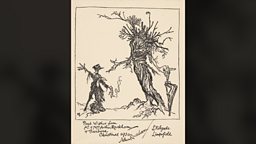


Depicting Charles Dickens' Scrooge
Rackham would work for much of the year on whichever book was due for publication in time for the festive season. In 1915 the Rackham Christmas book was to be a new edition of A Christmas Carol by Charles Dickens.
Dicken's Victorian Christmas morality tale had been an instant hit when it was first published in 1843, so when Rackham's version came out 72 years later, adorned with 12 new colour plates and monochromatic illustrations, it was hugely popular.
These illustrated Christmas books remain hugely collectable today. There are 525 numbered copies of A Christmas Carol signed by Rackham, and the value increases if the original silk ribbon ties are in place.
An original limited edition gift copy is likely to sell for several thousands pounds today.
The air was filled with phantoms, wandering hither and thither in restless haste, and moaning as they went.Charles Dickens, A Christmas Carol
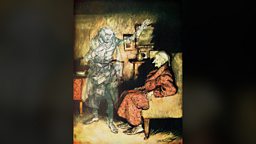



Blackened trees of London
It was almost a discovery for me when I found that tree branches were not black in the country.
Rackham's signature motif is his depiction of bare winter trees with their eerie, inky-black, human-like features. He grew up in the London neighbourhood of Lambeth, next to a mature garden full of diverse tree species.
He accounted for the distinct dark appearance of his hand-drawn trees, pointing to the atmosphere of sooty London at the time:
“You know how fond I am of drawing bare winter trees and drawing them with black ink. Well, it was almost a discovery for me when I found that tree branches were not black in the country.”
A far-reaching influence on art
Rackham's influence on the art world in the decades since he died in 1939 is difficult to measure. But many creatives have acknowledged their debt to his unique interpretation of the world, and his creatures both graceful and grotesque.
Guillermo del Toro cited him as a direct influence on the design of Pan's Labyrinth, the director's 2006 film.
And C.S. Lewis, author of The Chronicles of Narnia, was much taken with the illustrations for Siegfried and the Twilight of the Gods, saying: “Pure ‘Northernness’ engulfed me: a vision of huge, clear spaces hanging above the Atlantic in the endless twilight of Northern summer, remoteness, severity...”.
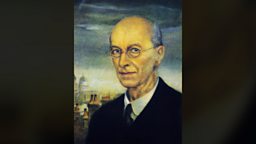
Related Links


Art UK: The UK public art collection
-
![]()
Discover Arthur Rackham at Art UK
Image - Detail of Rhine Maiden Lamenting by Arthur Rackham, from University of Dundee Fine Art Collections. One of the illustrations for a set of publications based on Wagner's The Ring Cycle.
- A version of this article was originally published in December 2016.

Arts Unwrapped
-
![]()
Mark Gatiss on the Christmas ghost story
With Count Magnus coming to TV, The League of Gentleman and Sherlock star reveals why he loves a festive fright
-
![]()
Is this the real Ebenezer Scrooge?
The possible inspiration behind Dickens' Ebenezer Scrooge, literature's most famous misanthropic businessman
-
![]()
Kermode on Christmas: Dark secrets and bad Santas
Mark Kermode's recipe for the perfect Christmas movie... there's one for every taste
-
![]()
The magical worlds of Arthur Rackham
Christmas gift books and the Golden Age of Illustration with A Christmas Carol, Peter Pan in Kensington Gardens and The Night Before Christmas.
Christmas movie magic from BBC Arts
-
![]()
Merry Christmas
How cinema has brought Christmas cheer to our screens for over a century, from It's a Wonderful Life to Elf.
-
![]()
Kermode on Christmas
From Home Alone and It's a Wonderful Life to action films like Die Hard and slasher favourite Black Christmas, there's something for every taste
-
![]()
Unmerry Christmas
From The Grinch to Bad Santa, this festive trip to the cinema is guaranteed to bring an icy tear to your cheek.
-
![]()
Five life lessons from classic Christmas movies
Unwrapping the hidden wisdom in Christmas movies.
More from BBC Arts
-
![]()
Picasso’s ex-factor
Who are the six women who shaped his life and work?
-
![]()
Quiz: Picasso or pixel?
Can you separate the AI fakes from genuine paintings by Pablo Picasso?
-
![]()
Frida: Fiery, fierce and passionate
The extraordinary life of Mexican artist Frida Kahlo, in her own words
-
![]()
Proms 2023: The best bits
From Yuja Wang to Northern Soul, handpicked stand-out moments from this year's Proms
